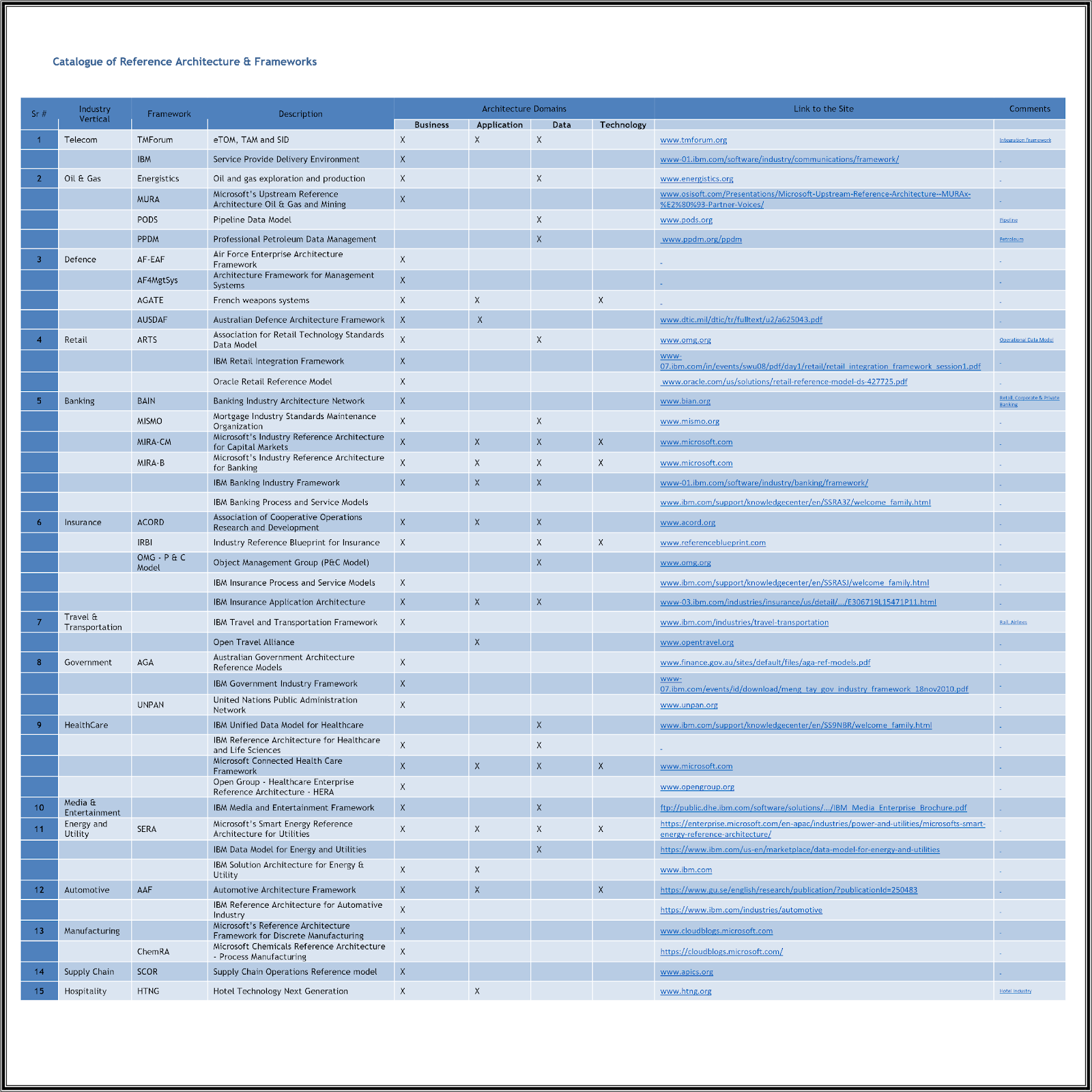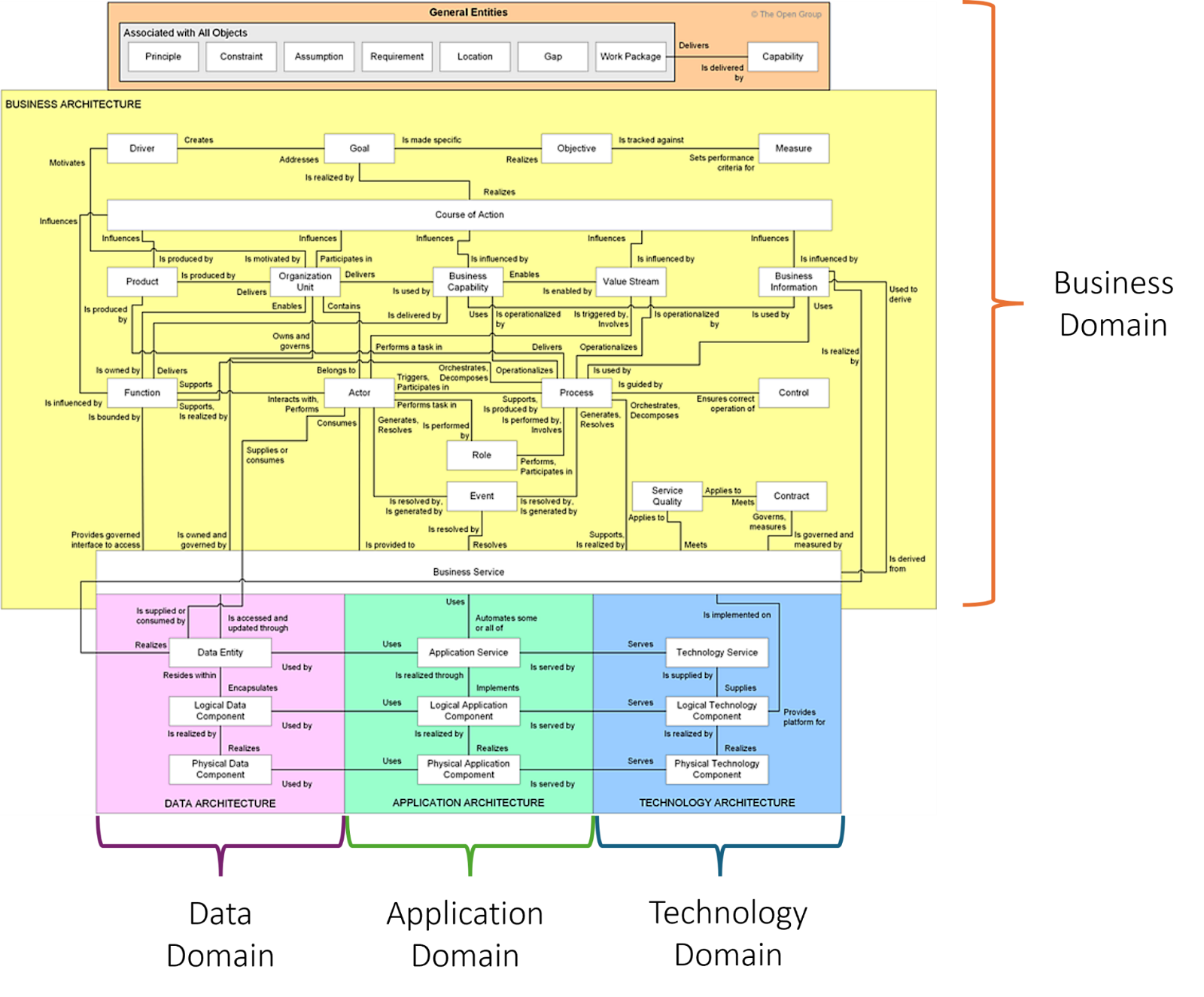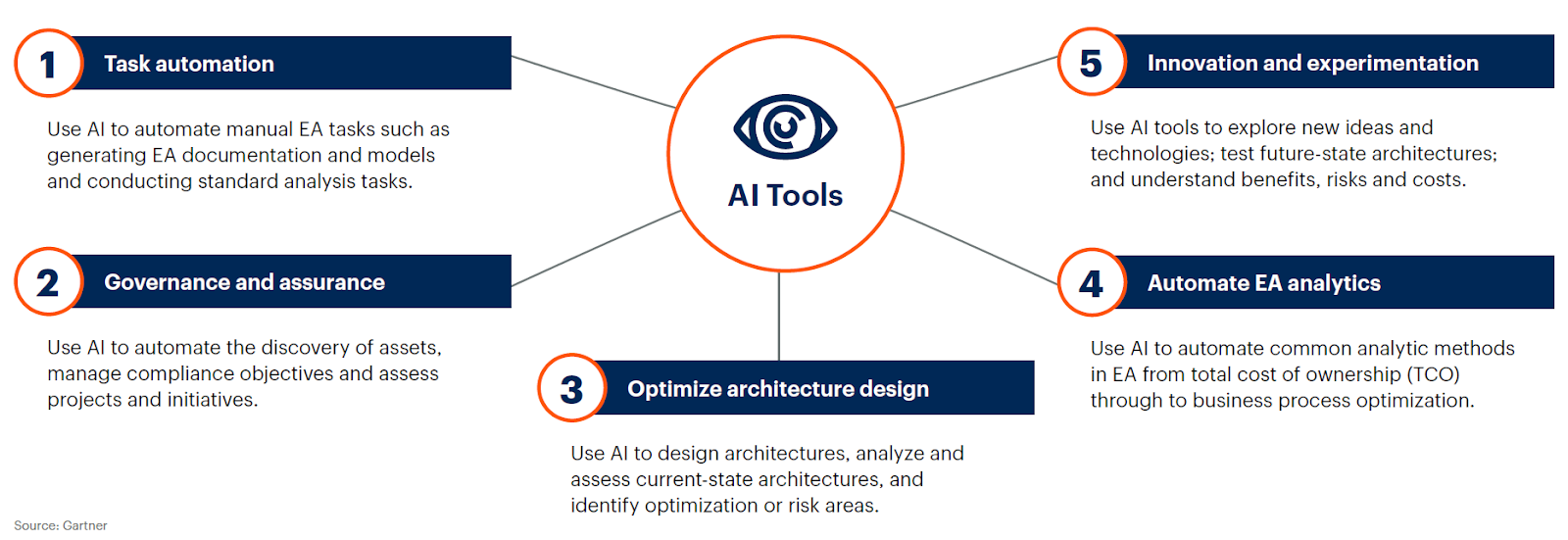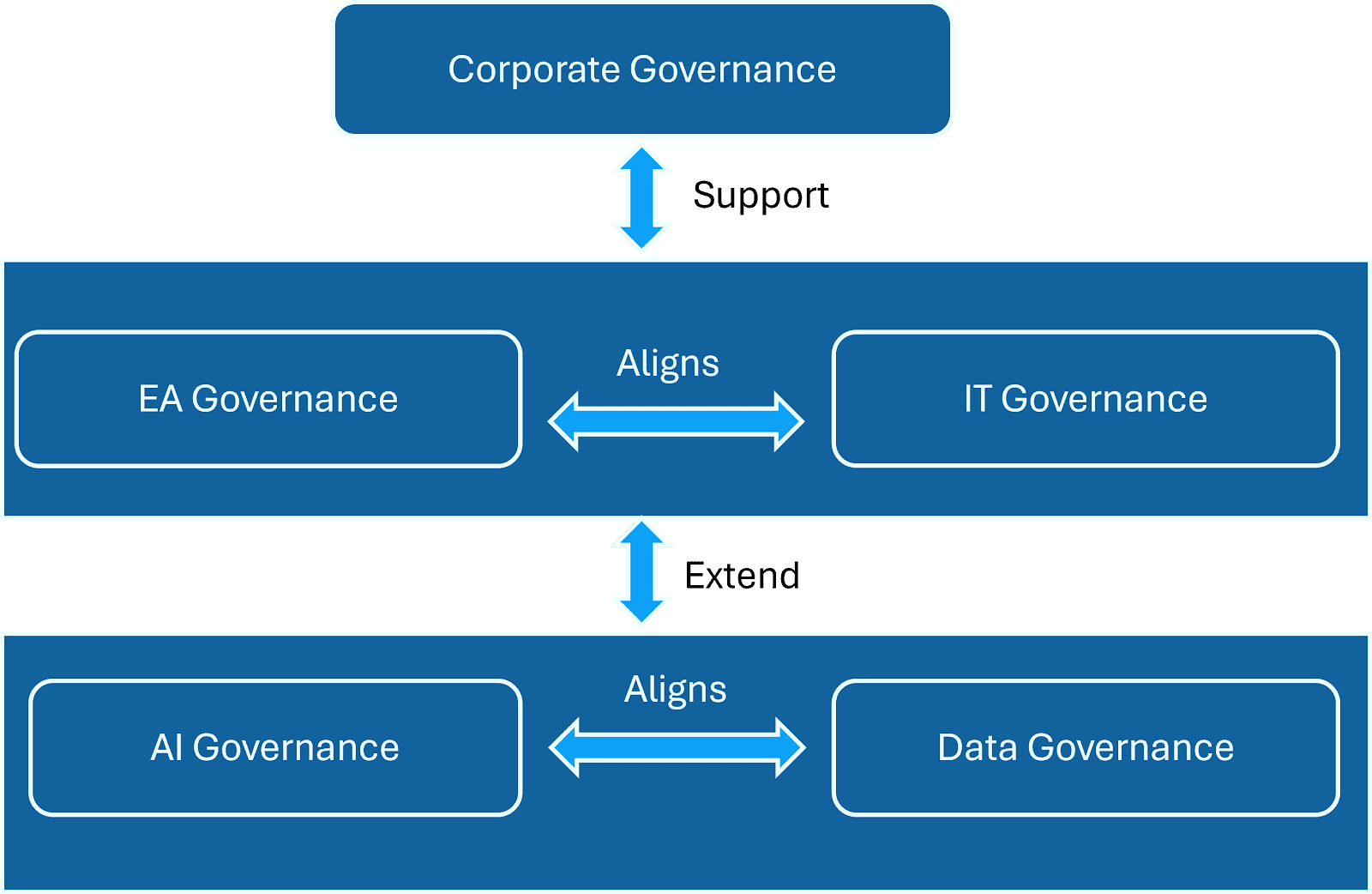Enterprise Architecture Reimagined: Exploring Its Facets in the Ai Epoch
Enterprise Architecture (EA) as a practice, as a role, as a thought process has come a long way in the last three and half decades since its inception. Various standards, frameworks, industries, and governments joined hands and climbed the ship of EA from time to time and reached destination (goal) of their stipulated time.
 EA role has both evolved and involved over the period and at this time of the AI era (other terms in the AI Epoch), multiple people have coined or termed different new terminology of EA as per their own perspective. The origin of these terminologies over the period has the basic thought that “EA is in crisis.” These all-coined terminologies are nothing but different viewpoints of EA.
EA role has both evolved and involved over the period and at this time of the AI era (other terms in the AI Epoch), multiple people have coined or termed different new terminology of EA as per their own perspective. The origin of these terminologies over the period has the basic thought that “EA is in crisis.” These all-coined terminologies are nothing but different viewpoints of EA.
EA was never and will never be in crisis. Organizations and industries crisis from the past was failure of not implementing EA. Such as the banking crisis (post which BIAN was set up) or the real estate crisis of the 2000s or the recent COVID-19 crisis. Each time one or multiple industries gets affected and there was a change in gear within organization(s) to understand EA as per their own understanding by following EA standards and frameworks specific to their industry. Over time, the standards, and frameworks pertinent to these specific industries and Enterprise Architecture have undergone a process of evolution and enhancement.
For a span of ten years, I have maintained a catalogue of EA Reference Architecture. It is important to note that the alterations to the site links are minimal and the list is not comprehensive, extending beyond the specified industry verticals or domains. While there are multiple such catalogues accessible in the market, this one is my preferred choice as it facilitates effective tracking.

In 2024 itself, one of the CXO coined such term “Full Stack EA” with context to obviously EA in crisis. People contested it across the news and social media with few in agreement and few in disagreement. My viewpoint is from disagreement with the strong contest is EA was and will never be specific to any stack be it business or technology stack. Then why do you need a full stack? EA was always full stack; it is not about any of the cards from the stack.
Below is the snapshot from one of EA frameworks TOGAF 10, which describes that EA is more than 70% about business and the remaining 30% would be part of data, application, and technology.

Issue or Crisis has always been in understanding EA. “There is always an ambiguity in understanding EA because EA is an area of the field with everything ambiguous.” Explained nicely by Dr. Pallab Saha, The Open Group CEO at one of the events. EA was never in crisis; it was always people or organizations who never realized the value of an EA until there was a crisis knock at the door. A few examples of such a mindset are HDFC Bank’s failure in late 2020 and now Kotak Mahindra Bank’s failure in 2024; both have not emphasized EA much. EA in such large banks has always been more of a department to complete the compliance checklist.
Now the reason this happened in Apr’2024 itself, is this AI Epoch. AI was always there in the background, in our studies during graduation but now it is reality in front of us. As mentioned earlier in this article, all EA frameworks and standards across industries are evolving to cater to AI (not just Gen AI). Last year 2023, even Gartner reflected to all CXOs, and leaders with similar guidance on the dilemma of EA during AI times.

The success of any EA depends on multiple factors, but the mantra is simply “Scale Fast, so that can’t be undone,” again from Dr. Pallab Saha. This EA mantra allowed multiple EA designs to become frameworks and standards. Consider the example of DoDAF which is EA Framework for the US Department of Defense, MoDAF which is EA Framework for the UK Ministry of Defense, or IndEA which is for the Indian Government.
Another reason in the AI era, everyone is worried about the “EA in crisis” kind of stuff is because AI is influential, and EA is noisy for 90% of organizations across the world from all diverse types of industries. The best example to explain EA being noisy would be COVID-19 crisis. Various industries disrupted by COVID-19, especially healthcare, hospitality, tourism, manufacturing, supply chain, and travel, among others. Again, the reason was not proper EA utilization whether internal or outsourced. Even research firms like Gartner, IDC, and Forrester started emphasizing EA with titles such as “EA – the dawn of new era,” and “EA – must for transformation.” As it again has gone backseat for few organizations, but all the organizations started realizing that EA is must to achieve their business vision with a timeline of 3-5 years as the target.
The authentic use of AI in EA is when AI operates as an auxiliary or support system, rather than serving as a substitute. AI tools have facilitated the acceleration of tasks within EA. However, the comprehension and expertise of Enterprise Architects remain essential for validating data points and perspectives in alignment with the business vision. Facilitating a collaborative environment between AI and EA governance could provide organizations with a competitive advantage, enhancing their alignment with their business vision and expediting the execution of EA tasks.

Multiple EAMs (Enterprise Architecture Management) or EA Tools are already incorporating AI in their core. One such tool is LeanIX which enables AI utilization within its EAM (Enterprise Architecture Management) tool. Even The Open Group has started work towards “Industry Collaboration on Open Standards for AI Professional Practice.”
Now coming to EA facets (multiple names), multiple terminologies coined over the period. I learned during one of the EA webinars, which is a fact, that there are more than eight (8) million architects’ titles in the market. If we narrow this down to EA, the count will be more than two (2) million. Organizations as per their understanding of EA and their convenience as per their businesses, have defined, coined, or termed these architectural roles. In this cycle, even EA frameworks like TOGAF have jumped and coined another term such as Digital Architect.
Another reason to have so many terminologies for an EA is because of the mindset “Architecture is about taking control of an organization.” Architecture is not about taking control of an organization. It is about giving control to organizations. You still need the organization. The clue is in the name, organization.
From my viewpoint, there are only four facets to any EA framework as mentioned in Figure 3 earlier and they are business, data, application, and technology. To contest my thought process, there is already a trend in the market that allows Architecture-as-a-service (AaaS) such as C4Interflow (again open source). These AaaS tool(s) are specific to an application component of EA.
There are multiple Enterprise Architects who share similar thought processes and agreements, and they play a significant role in supporting the EA practice worldwide. One such individual is Sam Holcman, whose focus is streamlining the Business Architecture component of Enterprise Architecture. Similarly, courtesy to George Hohpe, Martin Fowler, Neal Ford, and Mark Richards who keep inspiring new architects to move towards EA. The very definition of EA is now enabled as syllabus at universities, especially in India apart from other countries which would enable EA facets taught to our educational mindset even before we start working as an individual.
The mantra that I have learned over the period, especially as an EA, is to be useful and trusted to be an influencer as an EA. To achieve or execute this mantra, the focus should be on people.

References:
- The Software Architect Elevator – George Hohpe
- Fundamentals of Software Architecture – Neal Ford
- Whole EA – Tom Graves
- TOGAF
- DoDAF
- BACOE
- Gartner
Author:
Neeraj Gautam,
Enterprise Architect at ITC Infotech











